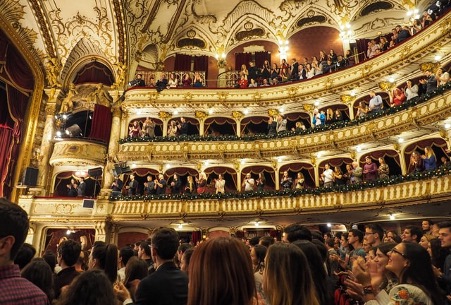Heidi Schave is a museum director in Alameda California and a contributor to arts and entertainment publications. In the article below, Heidi Schave discusses the current state of funding for the arts in the US.
As schools continue to cut funding for the arts, many worry that the arts, in general, may soon find a lack of patronage and organizational sponsorship. Yet, Heidi Schave notes that despite a downtick in funding, major organizations continue to find ways to raise money for artists and artistic endeavors. Although it may seem as if the arts are ending, they continue to and will continue to survive and find support.
Let’s explore some of the main ways that the arts manage to secure patronage. We’ll examine some of the largest organizations dedicated to supporting the arts, as well as discuss some of the fundraising techniques they implement to guarantee annual endowments.
Funding for the Arts in the United States
Heidi Schave reports that in the United States, the arts are funded through a variety of sources, including the government, foundations, businesses, and individual donors. Currently, the National Endowment for the Arts (NEA) is the primary source of federal funding for the arts. The NEA provides grants to organizations and individuals for a variety of arts-related activities, such as arts education, performance, and preservation.
In addition to the NEA, Heidi Schave says many state and local governments also provide funding for the arts. For example, the New York State Council on the Arts (NYSCA) is the largest funder of the arts in New York State. Through its endowments, the NYSCA has helped support over 2,500 organizations, including the Julliard School, the Museum Association of New York, and Dance Lab New York.
Foundations, on the other hand, are private, nonprofit organizations that provide funding for a variety of causes, including the arts. Some of the largest foundations include the Carnegie Foundation, the Bill and Melinda Gates Foundation, and the Rockefeller Foundation. Although most foundations provide funding for many causes, the arts always rank highly on their to-do lists.
After government grants and foundational support, Heidi Schave explains that businesses and individual donors provide the remaining funding for the arts. Many businesses provide financial support to arts organizations through sponsorships and philanthropy, as well as through employee giving programs, such as matching gifts and volunteer grants.
How Organizations Raise Funds for the Arts
Heidi Schave explains that organizations that raise funds for the arts do so through a variety of means, including grants, donations, and sponsorships. Overall, though, the most successful way to raise funds for the arts is through grant funding. After finding opportunities through online sources, such as Grants.gov and the Foundation Center, organizations submit grant proposals to:
- Describe the proposed project
- Outline the goals and objectives of the project
- Justify the need for the project
- Describe the project’s activities and how they will be implemented
- Explain how the project will be evaluated
- Include a budget and budget narrative
- Provide information about the organization, including its history, mission, and capacity to carry out the project
The grant proposal is reviewed by the granting organization, which then decides whether or not to award the grant, according to Heidi Schave. If the grant is awarded, the organization then carries out the project as described in the proposal.
Organizations may also solicit donations from individuals and businesses. Occasionally, major arts institutions host fundraising events, such as galas, concerts, and auctions to drum up support and secure funding. However, younger artists without institutional support cannot rely on long-standing patrons and may solicit donations through crowdfunding platforms, such as Kickstarter and GoFundMe.
Heidi Schave reports that some museums and arts institutions also gain financial support through sponsorships with celebrity artists, actors, and musicians. However, if an organization secures a sponsorship, it isn’t always a direct donation. Sponsorships can take many forms, including financial support, in-kind donations, and general promotional opportunities.
Heidi Schave on the State of Funding for the Arts in America
Over the last several years the state of funding for the arts looked to be in trouble. Heidi Schave notes that each consecutive annual budget attempted to shrink the National Endowment for the Arts but, instead, it seems to have had an opposite effect. According to data released by the NEA, it’s actually seen a $17 million increase in funding over the past 5 years.
Although this signals a renewed interest in the arts, the NEA’s current $167.5 million annual budget is still quite a lot smaller than similar endowments in Europe and elsewhere says Heidi Schave. Nonetheless, private foundations, businesses, and individual donors continue to support the arts. For example, the Ralph C. Wilson Jr. Foundation single-handedly awarded a substantial $100 million donation to several Detroit arts programs.
Final Thoughts
Heidi Schave notes that although state and federal governments are failing to provide funding for the arts, museums, galleries, and exhibitions continue to thrive thanks to the concerted efforts of major foundations, businesses, individual donors, and the efforts of fundraisers around the nation.







